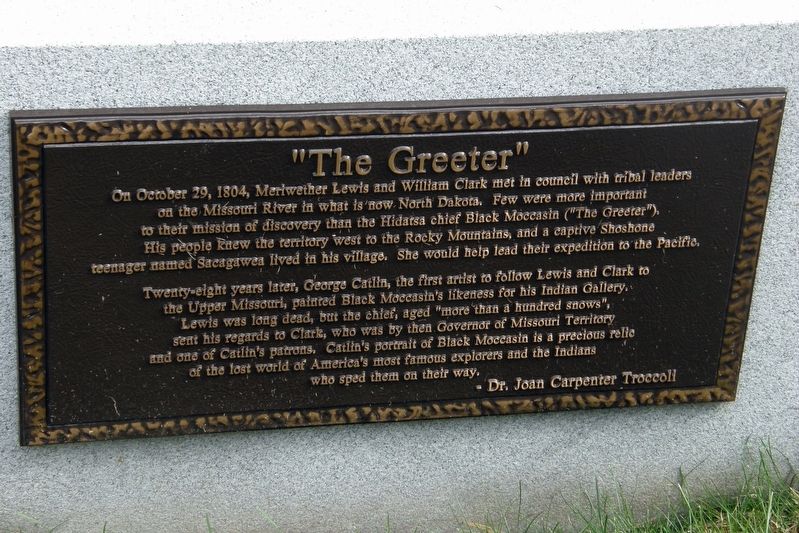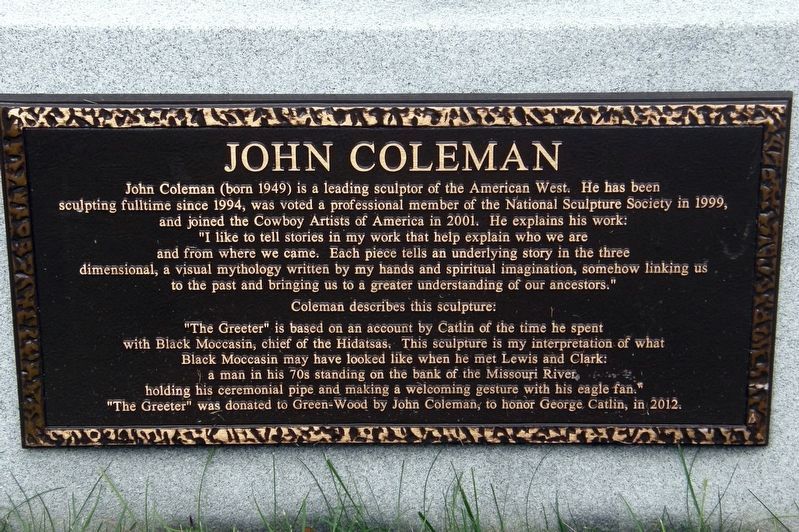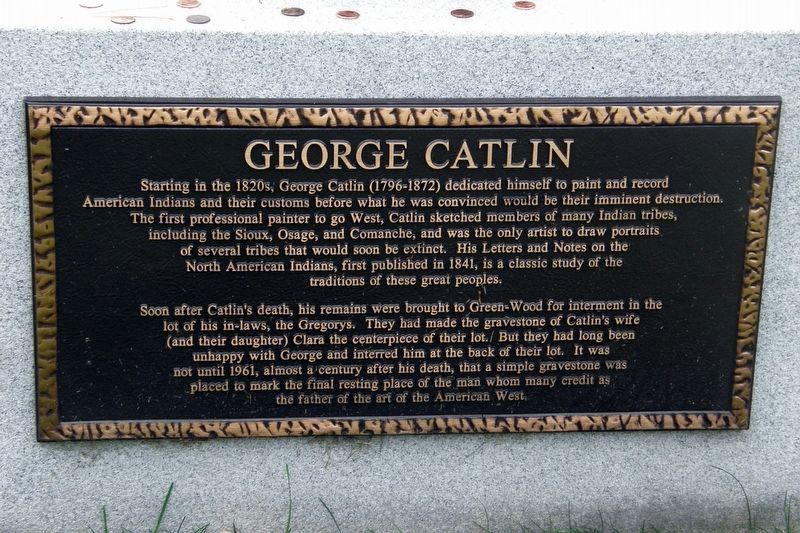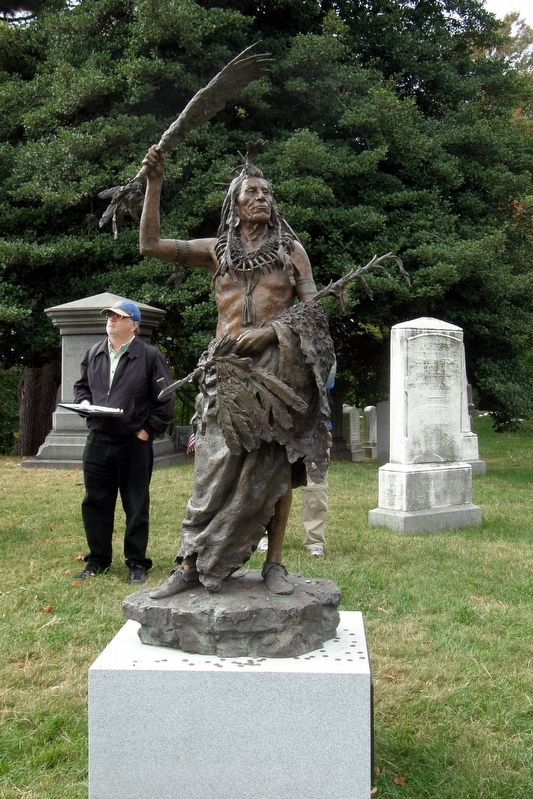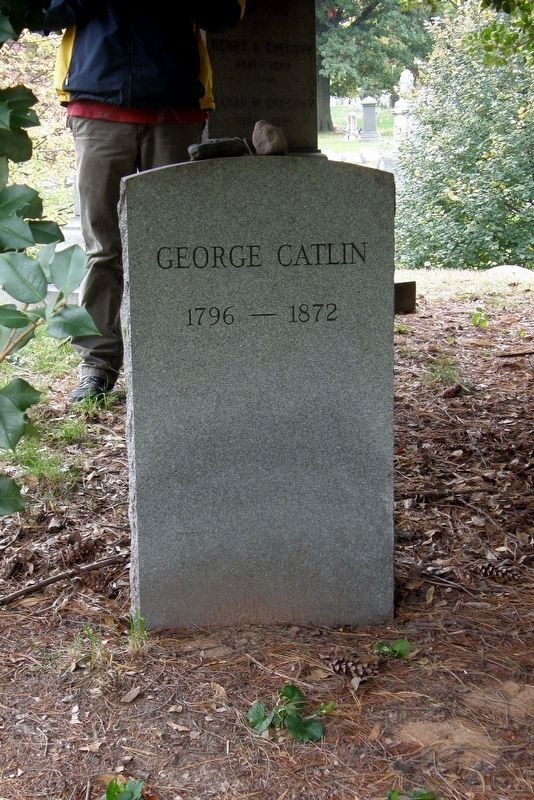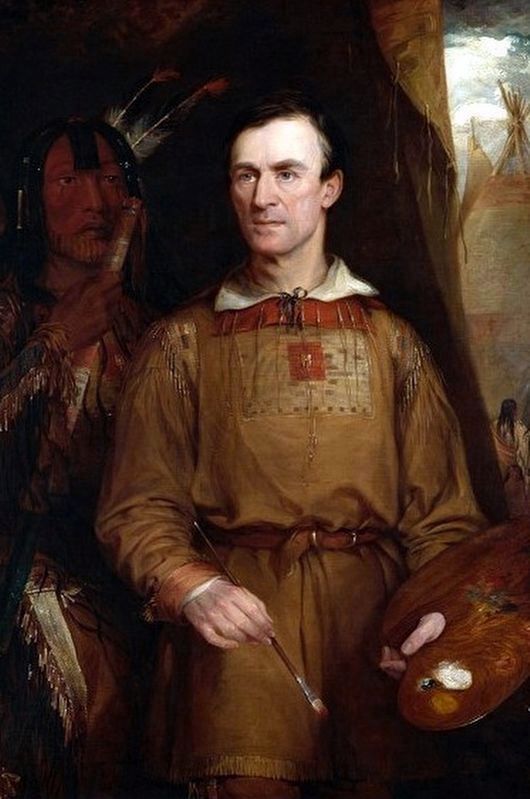Greenwood Heights in Brooklyn in Kings County, New York — The American Northeast (Mid-Atlantic)
“The Greeter” / John Coleman / George Catlin
On October 29, 1804, Meriwether Lewis and William Clark met in council with tribal leaders on the Missouri River in what was now North Dakota. Few were more important to their mission of discovery than the Hidatsa chief Black Moccasin (“The Greeter”). His people knew the territory west to the Rocky Mountains, and a captive Shoshone teenager named Sacagawea lived in his village. She would help lead their expedition to the Pacific.
Twenty-eight years later, George Catlin, the first artist to follow Lewis and Clark to the Upper Missouri, painted Black Moccasin’s likeness for his Indian Gallery. Lewis was long dead, but the chief, aged “more than one hundred snows”, sent his regards to Clark, who was by then Governor of Missouri Territory and one of Catlin’s patrons. Catlin’s portrait of Black Moccasin is a precious relic of the lost world of America’s most famous explorers and the Indians who sped them on their way.
-Dr. Joan Carpenter Troccoli
John Coleman
John Coleman (born 1949) is a leading sculptor of the American West. He has been sculpting fulltime since 1994, was voted a professional member of the National Sculpture Society in 1999, and joined the Cowboy Artists of America in 2001. He explains his work: “I like to tell stories in my work that helps explain who we are and from where we came. Each piece tells an underlying story in the three dimensional, a visual mythology written by my hands and spiritual imagination, somehow linking us to the past and bringing us to a greater understanding of our ancestors.”
Coleman describes this sculpture:
“The Greeter” is based on an account by Catlin of the time he spent with Black Moccasin, chief of the Hidatsas. This sculpture is my interpretation of what Black Moccasin may have looked like when he met Lewis and Clark; a man in his 70s standing on a bank of the Missouri River holding his ceremonial pipe and making a welcoming gesture with his eagle fan.”
“The Greeter” was donated to Green-Wood by John Coleman, to honor George Catlin, in 2012.
George Catlin
Starting in the 1820s, George Catlin (1796-1872) dedicated himself to paint and record American Indians and their customs before what he was convinced would be their imminent destruction. The first professional painter to go west, Catlin sketched members of many Indian tribes, including the Sioux, Osage, and Comanche, and was the only artist to draw portraits of several tribes that would soon be extinct. His Letters and Notes on the North American Indians, first published in 1841, is a classic study of the traditions of these great people.
Soon after Catlin’s death, his remains were brought to Green-Wood for internment in the lot of his in-laws, the Gregorys. They had made the gravestone of Catlin’s wife (and their daughter) Clara the centerpiece of their lot. But they had long been unhappy with George and interred him at the back of their lot. It was not until 1961, almost a century after his death, that a simple gravestone was placed to mark the final resting place of the man whom many credit as the father of the art of the American West.
Erected 2012.
Topics. This historical marker is listed in these topic lists: Arts, Letters, Music • Exploration • Native Americans. A significant historical date for this entry is October 29, 1804.
Location. 40° 39.279′ N, 73° 59.829′ W. Marker is in Brooklyn, New York, in Kings County. It is in Greenwood Heights. Marker can be reached from Walnut Avenue. The marker is within Green-Wood Cemetery, near Landscape Avenue and Bluff Side Path. Touch for map. Marker is in this post office area: Brooklyn NY 11221, United States of America. Touch for directions.
Other nearby markers. At least 8 other markers are within walking distance of this marker. Korean War Irish Memorial (about 300 feet away, measured in a direct line); New York City Airliner Disaster (about 600 feet away); Historic Chapel (approx. 0.2 miles away); William Moir Smith (approx. ¼ mile away); John Brooks Henderson (approx. ¼ mile away); Governor DeWitt Clinton (approx. ¼ mile away); Martense Lane Rock (approx. ¼ mile away); The Green-Wood Cemetery (approx. ¼ mile away). Touch for a list and map of all markers in Brooklyn.
Also see . . . George Catlin. Wikipedia biography. (Submitted on April 17, 2020, by Larry Gertner of New York, New York.)
Credits. This page was last revised on January 31, 2023. It was originally submitted on November 25, 2018, by Larry Gertner of New York, New York. This page has been viewed 431 times since then and 37 times this year. Photos: 1, 2. submitted on November 25, 2018, by Larry Gertner of New York, New York. 3. submitted on November 27, 2018, by Larry Gertner of New York, New York. 4, 5. submitted on November 25, 2018, by Larry Gertner of New York, New York. 6. submitted on April 17, 2020, by Larry Gertner of New York, New York. • Bill Pfingsten was the editor who published this page.
